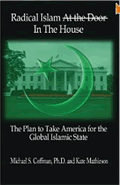THE BUNDY STANDOFF—A
CENTURY OF ABUSE
PART 1
By
Michael S. Coffman, Ph.D
May 17, 2014
NewsWithViews.com
Original Intent
For days following April 8, hundreds of well-armed Bureau of Land Management (BLM), and even hundreds more partially-armed Bundy supporters stood toe-to-toe. Any spark could have caused another Waco. Finally, the BLM backed off, allegedly for safety reasons. Don’t believe it. There is a much bigger story here and the media is wrong on most counts.
Most Americans have no idea that over 50 percent of the Western U.S. is owned or controlled by the federal or state governments. This creates a feudal relationship between an all-powerful government and the local landowners who must use the adjacent federal land to make a living. As with the feudal governments in Europe during the middle-ages, the land is managed for the benefit of the government, not the landowner, using a dangerous ideology called Sustainable Development. Produced by Environmental Perspectives, Inc., Bangor, ME 04401
MOST AMERICAN’S WHO LIVE EAST OF THE ROCKY MOUNTAINS, or those who live in large urban/suburban areas in the West, are surprised to learn that the federal government owns or controls over 30 percent of the land area in the United States. Most of that land is in the Western States where over 50 percent of the state is federal “public land.” Rural residents that make their living from federal lands are finding that Washington is enacting regulations that seem more intent on bankrupting them than helping them. An uninformedpopula¬tion in the East is complicit by default.
The closest form of governmentwhere the federal government dominatesthe lives of those people using federal land is feudalism/manorialism.[1] This is a form of government whereby an all-powerful land owner, usually royalty, rents his land with restrictions and with the condition of receiving a portion of the crops or other services from the renter. Today the federal government replaces the king as the landlord. This new king serves Washington special inter¬ests, usu¬ally environ¬mentalist and inter¬national dictates, which are con¬trary to the interests of the local rancher or land user. Too often they are also contrary to actual environ¬mental health.
To understand what has happened and is happening with the Bundy Ranch it is mandatory to understand the history of American expansion westward. It may be boring for some, but unless the history is understood, numerous false assumptions and conclusions will be made. The media and bloggers have done far more harm than good in their analyses.
As
with almost everything else that has been twisted from original intent,
the Founders never intended there should be large federal landownership.
When they wrote the U.S. Constitution, feudalism and manorialism still
existed in  France.
Our Founders were eye-witnesses to the brutal treatment of the peasants
under such a system. In 1783 Thomas
Jefferson even went so far as to insist that all federal land should
be sold as quickly as possible and, “shall never after, in any
case, revert to the United States.”
France.
Our Founders were eye-witnesses to the brutal treatment of the peasants
under such a system. In 1783 Thomas
Jefferson even went so far as to insist that all federal land should
be sold as quickly as possible and, “shall never after, in any
case, revert to the United States.”
To ensure that the federal govern¬ment never amassed large land holdings, our Founders allow¬ed only three forms of federal land own¬ership and jurisdic¬tion in Article I Section 8 of the U.S. Constitution: "To establish Post Offices and post Roads;" "To exercise exclusive Legislation…, over such District [of Columbia](not to exceed ten Miles square);"… " and to exercise like Authority over all Places purchased by the Consent of the Legislature of the State…for the Erec¬tion of Forts, Magazines, Arsenals, Dock Yards, and other needful buildings." (Italics added)
With these constitutional constraints, how did the federal government wind up with more than 50 percent of the land in every state west of the Rocky Mountains? Why not the East as well? Most important, what does it have to do with the Bundy ranch?Everything.

Map of the states
and territories of the United States as it was from August 1780 to 1790.
On August 7 1789 the Northwest Territory was organized. On May 26 1790,
the Territory South of the Ohio River was organized.Made by Golbez.
Used under the GNU Free Documentation License
Original Intent
The individual states were so fearful of an all-powerful central government that they essentially gave no power to the federal government under the Articles of Confeder¬ation. The failure of the Articles led to its replacement by the U.S. Constitution of the United States in 1787. The chief failure of the Articles was, as George Washington put it so succinctly, “no money.” The federal government was deeply in debt following the Revolutionary War, but had no way under the Articles to repay it except by printing useless paper money that had no value.
To pay the debt, the states eventually ceded their state land to the federal government in a trust. The trust limited its use to that of repaying the debt. Virginia’s 1783 “Cession of Western Lands to the United States” was the first to do so. The Act stated “…that the territory so ceded shall be…formed into states,…and the States so formed shall be distinct republican States, and admitted members of the Federal Union, having the same rights of sovereignty, freedom, and independence as other States….” (Italics added) This was known as the “Equal Footing Doctrine,” whereby every state entered statehood on an equal footing with all states already existing.
The
Equal Footing Doctrine was formalized for the entire U.S. with the passage
of the Northwest Ordinance in 1787, but only after the federal
government  sold
the land to pay down the debt by stipulating that new states “in
no case, shall interfere with the primary disposal of the soil by the
united States in Congress assembled.” It also stipulated “that
no tax shall be imposed on lands on the property of the United States.”
However, once the population reached 60,000 people, each new state would
be admitted on an “equal footing with the original States, in
all respects whatever.” Thisextended:
sold
the land to pay down the debt by stipulating that new states “in
no case, shall interfere with the primary disposal of the soil by the
united States in Congress assembled.” It also stipulated “that
no tax shall be imposed on lands on the property of the United States.”
However, once the population reached 60,000 people, each new state would
be admitted on an “equal footing with the original States, in
all respects whatever.” Thisextended:
“the fundamental principles of civil and religious liberty, which form the basis whereon these republics, their laws and constitutions are erected; to fix and establish those principles as the basis of all laws, constitutions, and governments, which forever hereafter shall be formed in the said territory: to provide also for the establishment of States, and permanent government therein, and for their admission to a share in the federal councils on an equal footing with the original States…”
Notice that it was passed as a basic human right, not to be altered by any future legislation. Yet, it was totally ignor¬ed in the creation of states west of the Rocky Mountains. That fundamental right was codified in its entirety into the U.S. Constitution the same year. Federal lands within the territories were “trusts” that would be transferred to the state when it became a state. New states had to be given the same rights as the original statesonce they reached a population of 60,000 people. There is absolutely no Constitutional basis for “federal land ownership” on the scale of that found in the far West. None. This has a direct bearing on the Mundy Ranch case as will be discussed in Parts II and III.
The Northwest Ordinance also codified the principle that land ceded by the states would be used to pay the war debt and not held in perpetuity by the federal government. The Act also allowed the creation of the Northwest Terri¬tories, (now Ohio, Indiana, Illinois, Michigan, Wisconsin and a portion of Minnesota) which was formally accomp¬lished in 1789.Historians consider the ordinance to be the most significant achievement under the Articles of Confederation. It set the form by which subsequent Western territories were created and later admitted into the Union as states.
Early Evolution of Land Law
Although it was fraught with controversy and power plays, all future states east of the Rocky Mountains did enter the federal Union over the next 100 years on a more or less equal footing. The federal government for the most part did not retain large blocks of land. Of the many things that happened during that period, the most notable are the Preemption Acts of 1830 and 1841, the Homestead Act of 1862 and the Act of 1866 (see sidebar).
The mid 1800s created chaos in Western policy as the tension, and then Civil War between the North and South resulted in turbulent allegiances and politics. The Mexican War also occurred during the mid-1800s and was ended with the Treaty of Guadalupe Hidalgo in 1848. Part of the settlement in the treaty required Mexico to cede all its territory to the U.S. from Texas to Colorado and westward to the Pacific. Most importantly, Article VIII of the treaty clearly stated:
Mexicans now established in territories previously belonging to Mexico, and which remain for the future within the limits of the United States, as defined by the present treaty, shall be free to continue where they now reside, or to remove at any time to the Mexican Republic, retaining the property which they possess in the said territories, or disposing thereof, and removing the proceeds wherever they please, without their being subjected, on this account, to any contribution, tax, or charge whatever.
The word Mexicans in Article VIII also included Americans. The conditions of the treaty stipulated, without exception, that the U.S. honor any and all property rights granted to the residents of the newly created U.S. territory. This included all types of property rights, especially water and grazing. By this time, much of it was already settled, including timber rights in the forested area. Since the treaty closely paralleled the Preemption Act of 1841, few people paid attention to it. Also, since the federal government did not set up administrative units in the territory for years, the ranchers, timber barons and others continued to do what they had always done.
Growing a crop to harvest was very problem¬atic. If the rancher’s 160 acres contained a perennial stream, the owner could perhaps irrigate; if able to afford the equipment. Few could. Because life was so hard, a majority of Homesteads fell victim to speculators who bought the land at steeply discounted prices.
The Enlarged Homestead Act of 1909 increased the acreage of the homestead to 320 acres. This gave most homesteads east of the Rocky Mountains sufficient acreage for marginal dry-land farming. If the 320 acre homestead had water, a small herd of livestock could even be raised. The 1916 Stock-Raising Homestead Act increased the acreage once again to 640 acres for ranching purposes. With these three Acts, most of the land east of the Rockies was quickly settled by homesteaders and very little land remained as Public Domain. However, the three Acts still did not provide sufficient acreage for arid homesteading west of the Rockies so most land remained in the Public Domain.
Ranchers owning homesteads west of the Rockies had another problem. Not only did they need water for their livestock, the parched land would not support much forage for grazing. They required thousands of acres to graze a herd large enough to sustain a family in even marginal comfort. The answer was Preemptive Rights of Appropriation, where the rancher used his or her homestead as a base and grazed his cattle on public land called open range (without fences). They could use, but not own the public land. The open range led to bitter range wars when one homesteader/owner’s livestock grazing encroached upon another.
Since water was life in the west, water wars were also common. They were a type of range war whereby one homesteader would dam up a creek, usually for watering livestock, thereby denying water to downstream homesteaders. Even without these conflicts, water was extremely precious, perhaps more so than gold. Ranchers built ditches, water tanks were dug and seeps enlarged. Often these were on public lands upon which the cattle and sheep were grazed. The more water that could be developed, the more livestock that could be grazed; limited only by the forage produced.
This use of water on public land evolved into a property right that was codified by Congress as a “pre-existing right of possession” by a law, simply labeled the Act of 1866. This Act started what is known as the “split estate” in which one owner, the federal government in this case, owns the land and another owner, the homesteader, owns the mineral, grazing and/or water rights. The Act gave mineral rights to those miners actively mining the public lands and water rights to ranchers actively grazing the public lands. All other mineral and water rights remained with the federal government. These water and mineral rights were strengthened by the Act of 1870 and especially by the Desert Land Act of 1877.
This provides some of the legal ground on which Bundy makes his case. But he made it to the wrong court. Although the U.S. District Court which ruled against Bundy, does have jurisdiction, itrules on administrative, civil and criminal law, not specifically Constitutional law. As detailed in Part II, rarely does the District Court use the U.S. Constitution in deciding a case, even though it should. In other words, since the BLM followed the laws governing the BLM and case law, Bundy lost. That’s why most ranchers lose in District Court. The fact that Bundy lost in District Court is almost constitutionally meaningless in understanding the issue.
The media, for the most part has incorrectly used the District Court cases as hard-core evidence that Bundy was wrong. That does not make him wrong constitutionally.It is likely he will now sue in the U.S. Court of Federal Claims whichhears claims for monetary damages that arise from the United States Constitution, federal statutes, executive regulations, or an express or implied in fact contract with the United States Government. As explained in Part VI, this lawsuit will probably have an entirely different outcome than in the U.S. District Court.
|
This admittedly abbreviated and simplified history glosses over the messiness and even lawlessness of the process. In retrospect the Preemption and homestead laws didn’t really work as intended. Most of the homesteads failed, and unscrupulous speculators greatly profited at the expense of the homesteaders. Yet, some homesteaders did succeed. More importantly the land shifted from public to private ownership where it would eventually become the “breadbasket of the world.”
Fortunately for the world, land east of the Rocky Mountains has very little federal land today because of federal policy and constitutional restrictions based on the Equal Footing doctrine of the Northwest Ordinance. What happened to radically change well-established Constitutional law? Two new unconstitutional laws in the late 1800s radically changed the public land west of the Rockies by keeping it in the hands of the federal government. That change was destined to become a disaster for people who had to make a living from that land.
Click here for part -----> 1, 2, 3,
� 2014 Michael Coffman - All Rights Reserved
Footnotes:
1. Feudalism was the political, economic, and military system of the middle ages. It involved the bequeathing of land and protection from kings down to nobles, down to knights, and down to the peasants, who could own no property and were at the mercy of the nobility. Manorialism refers to the economic system on a fief, either part of the fief or the whole as a manor - a self-sufficient, isolated village.












 Share
This Article
Share
This Article





